Handcrafted Guitar Puzzle Box!
by BurlyWoodWorks - Create Something in Workshop > Woodworking
8377 Views, 81 Favorites, 0 Comments
Handcrafted Guitar Puzzle Box!





How to make a Handcrafted Guitar Puzzle Box! This is a very fun, and inspirational box that I really enjoyed making. And whether you're a beginner woodworker, or a pro; This box is relatively easy and fun either way!
So without further ado, let's get started!
Tools and Materials used for this project:
• Scroll Saw
• Guitar Template (see step 2.)
• Drill
• Drill bits (1/16" and 1/4")
• Scroll saw blades
• Screws (see step 6.) x2
• Screw driver
• Wood glue
• Pencil
• CA Glue and/ or Super Glue
• Small Hinges (x2)
• Screw (see step 23.)
• Palm Sander
• Sand Paper (120, 200, 400 and 1000 grit)
• Clamps (x2)
• Disc Sander
• Rejuvenating Oil
• (optional) beeswax,
Find Your Template



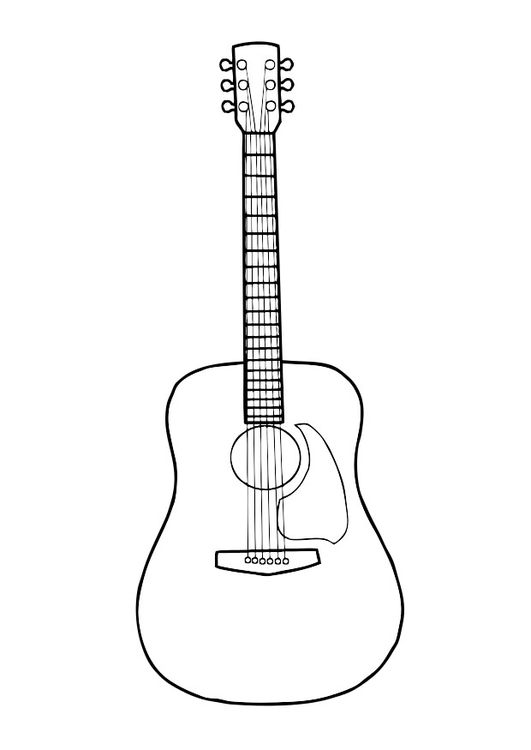
The first thing you're going to do is find your template. Here is a template I found on the internet, it is a free image so there's no copyright. What you're going to do is print out your template out, and then transfer it to the wood you decide to use for your box lid. Before you transfer it, cut the neck of the guitar template off about halfway.
(The wood I chose to use is some figured Quilted Maple, but you can choose any wood you like.)
Once done, you're ready for the next step.
Downloads
Cut Out Your Lid


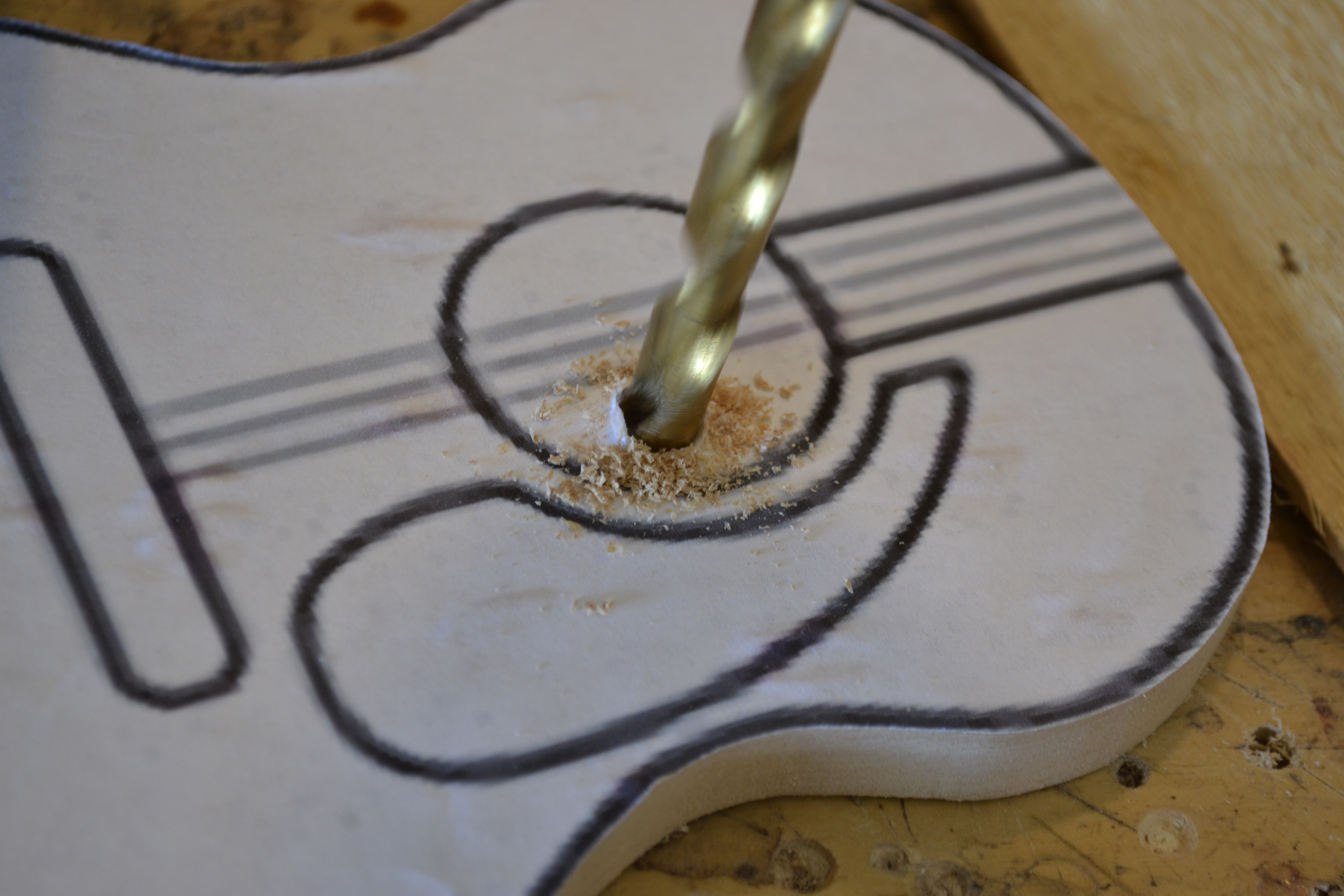


Now it's time to cut out the lid of your box. Here I used my Scroll Saw to do this, but you can use any saw you like. I started by cutting just outside the line, and making sure to maintain a steady hand; because you want to cut it as precise as possible to prevent further sanding in the future. Then, drill a 1/4 in. hole in the middle of the Sound Hole, After you've done that, insert your scroll saw blade into the hole and cut out the inside of the hole. You can bypass cutting out the hole if you had a Forstner bit and/ or Spade bit to drill it out, but I chose to cut it out instead.
NOTE: Do not remove the template from the wood yet, you will need it in the next steps.
Once done, you can move on.
Make the Neck
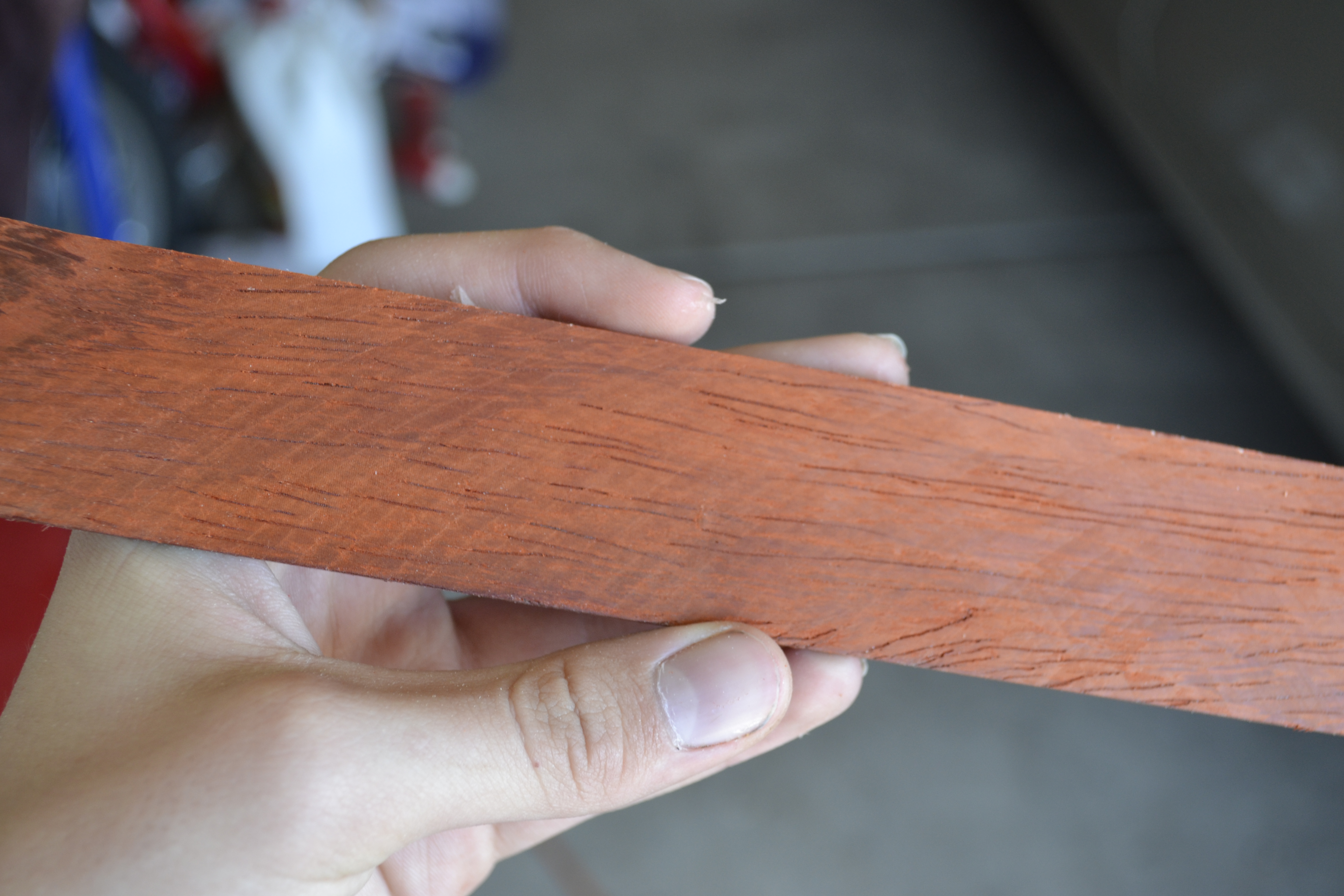



Now you can make the neck of the guitar. I decided to use a beautiful piece of Paduak for the neck to provide a good transition between the Maple. Start by taking the template you cut off previously, and transferring it to your Paduak. Once done, you can take it to the scroll saw and start cutting just outside the line. Again, trying to maintain a steady hand for a clean cut.
Once you've cut it out, you can remove the template from the wood, and you're ready to move on.
Cut Out the Remaining Components.
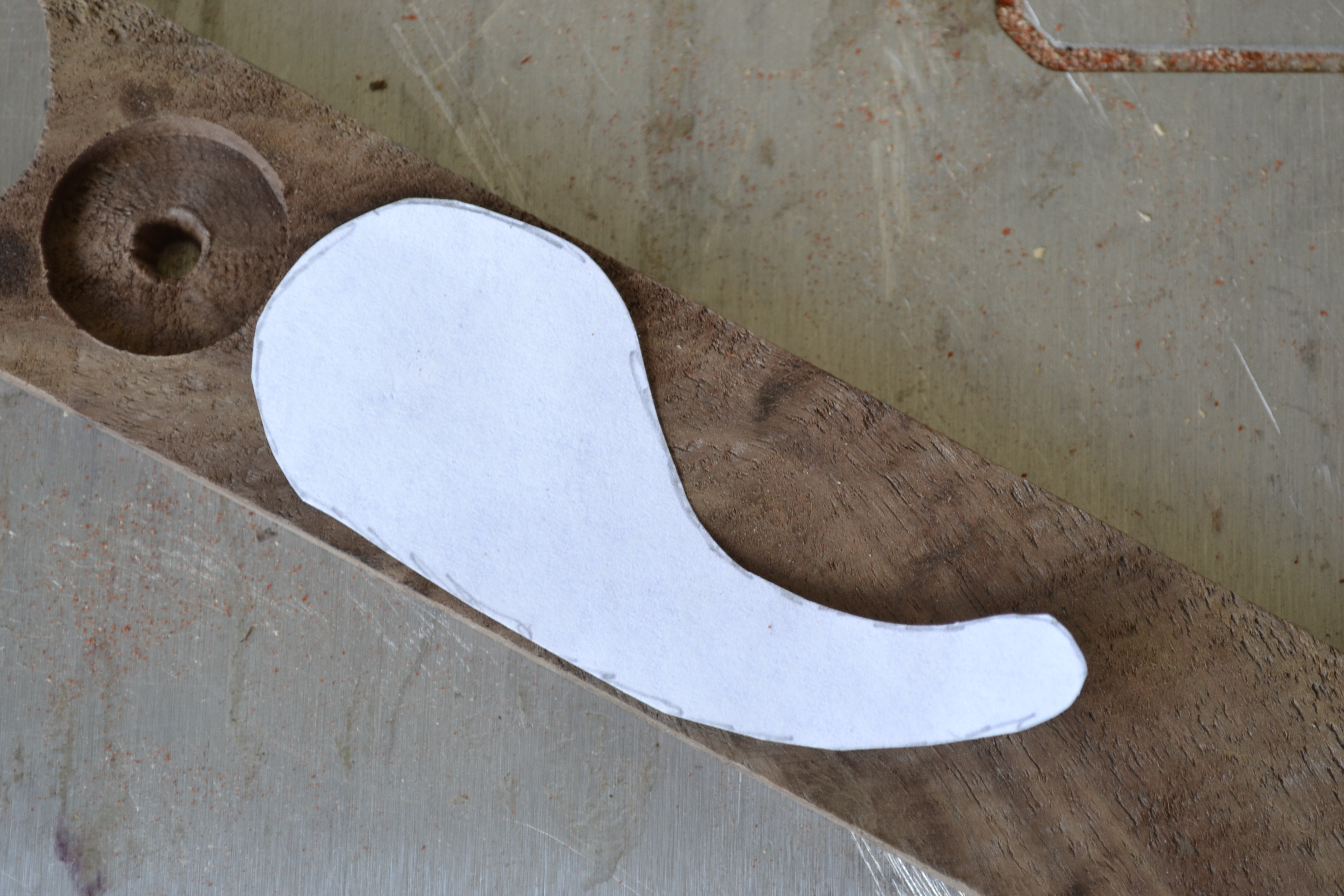
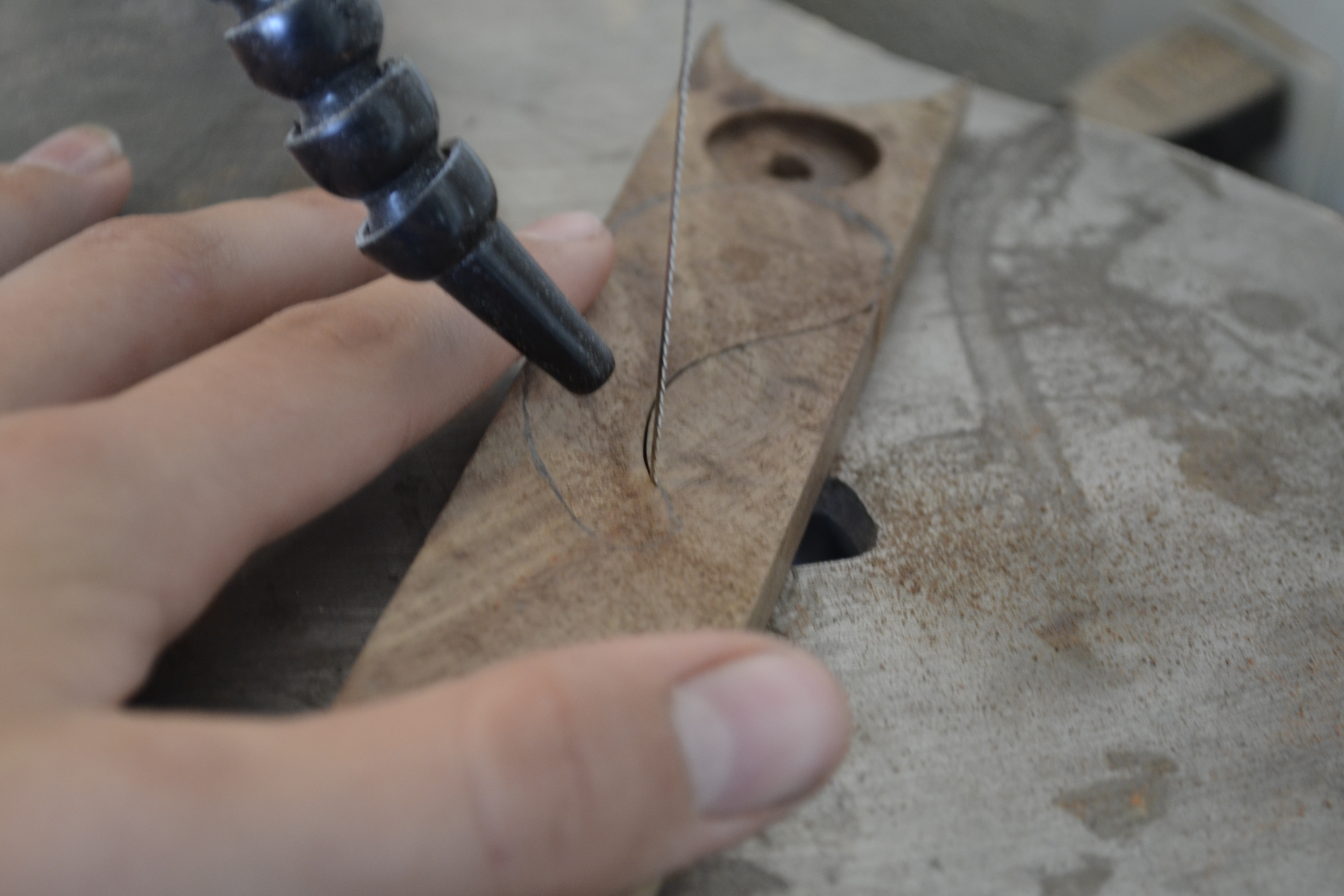


Now you can cut out the remaining components of the Guitar. Here I took a piece of 3/16" thick Walnut, and traced the template of the Pick Guard unto it with a pencil. Then, I took a curly piece of unknown wood and traced the Bridge unto it as well. Then, I took it to my Scroll Saw and cut them out. Try to be as precise as possible when cutting these out, because you want them to look fairly symmetrical when the box is finished.
Once done, you can move on.
Cut the Slots



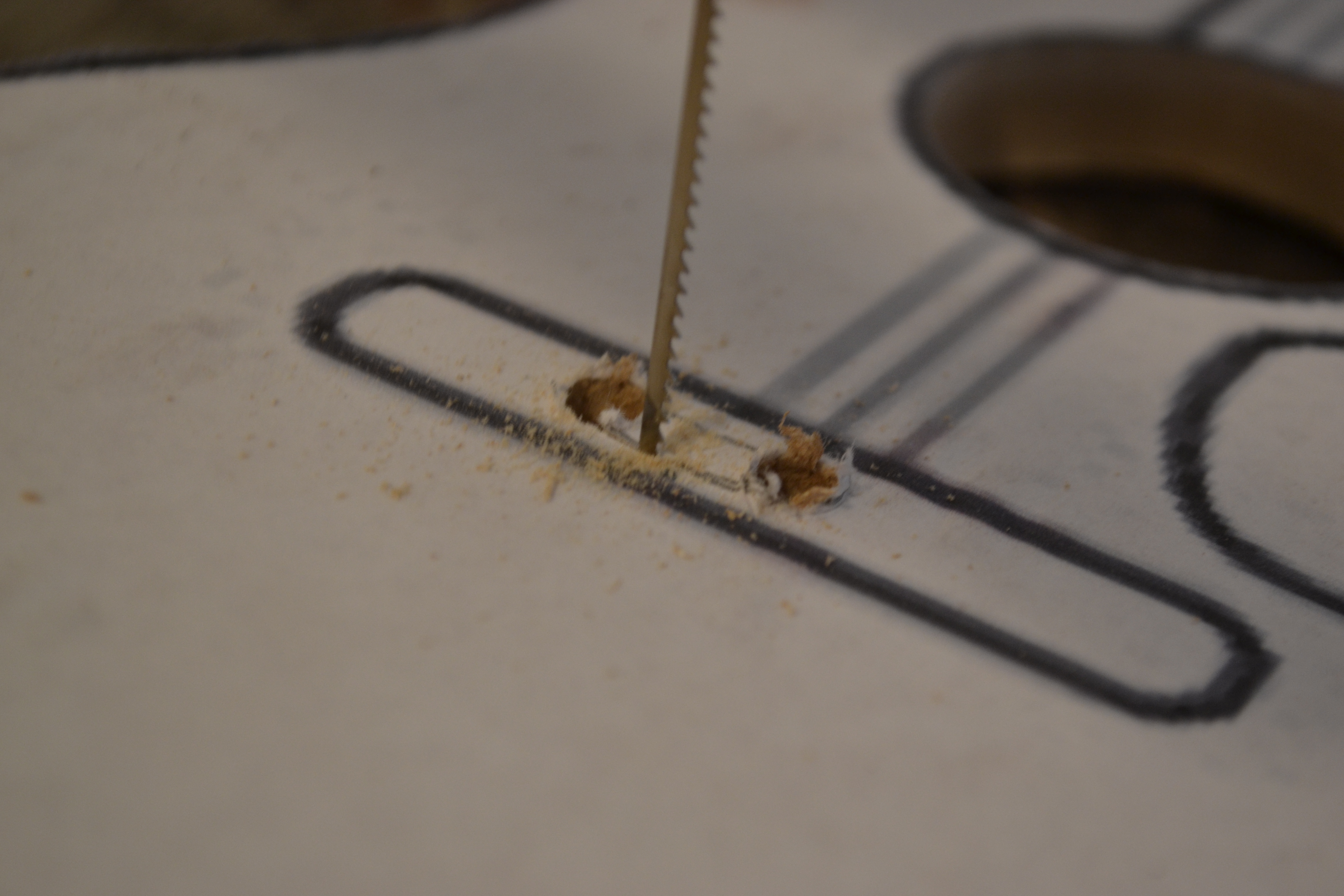





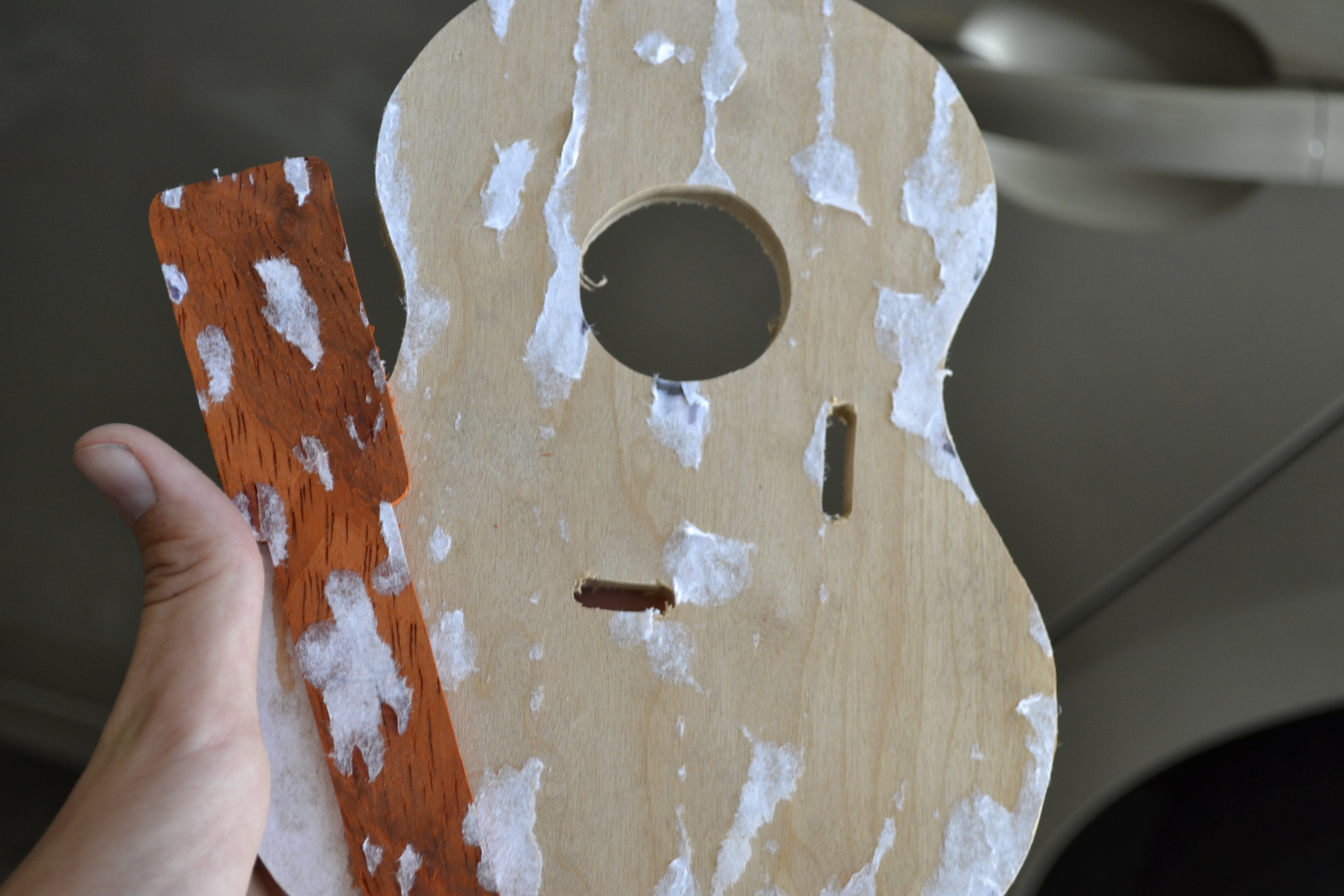
Now it's time to cut out the slots of the guitar for the moving components of the puzzle box. Start by taking a pencil, and tracing a small slot about 1/4" x 1" unto the bridge outline of the lid. (see images above) Then, drill two 1/4" holes on both sides of the slot you traced. Then, take the lid to the scroll saw and insert the blade into the holes that you drilled. Then, cut a straight line from one hole, to the other; making a instant slot as described. (see images above) Then, do the same with the Pick Guard as seen above. You don't need any real measurements to make these slots, you just need to make them center with their components. Then, remove the template from the wood. Sand the rest off if necessary.
Once done, you're ready for the next step.
Find Some Screws


Now that your slots are cut, it's time to find the most important components of the box; the screws. These are very important because they are what gives the pieces the ability to move. So, what you need is 2 screws that have the same diameter as the slots you cut, but wide heads so they aren't able to squeeze through the slots. (see images above) They also need to be about 1/8" thicker than the lid. Once you've found the screws you need, you're ready to move on.
Cut Your Puzzle Pieces






Now it's time to cut the moving components of the puzzle box. Start by taking a scrap-piece of Paduak from the Neck that we cut, and cutting it so that it's about 1 1/2" longer than the Sound Hole, but the same thickness horizontally, this piece will be called 'A'. Then, cut three pieces of Plywood about 1/2" x 2 1/2" x 1/8", these pieces will be called B, C and D. And then cut two Plywood squares about 1/2" x 1/2" x 1/8", these will be called piece E.
Once cut, you're ready to move on.
Dry-assemble Your Mechanism





Now it's time to dry-assemble the puzzle box mechanism. You'll start by placing piece A over the Sound Hole. And then placing piece B just under piece A, over the slot. Then place piece C just to the left of piece A. And then place piece D on top of piece A and piece B. Then, place both pieces E on either side of piece B. (see images above)
This is going to give you an understanding of how the mechanism will come together.
Glue Your Pieces





Now it's time to glue your two pieces. These two pieces will be the only ones that will be glued. To start, you will glue piece A to piece D. You want piece D to be centered in the middle of piece A, but have 1/2" overhang. (see images above) Then, glue both E pieces to piece B. You want them to be centered, but be spread apart at about 7/16". (see images above) Wait for glue to dry. (about 3-5 hrs)
Once done, you can continue to the next step.
Trace Your Slot




Now that your pieces are glued and dried, you can now start tracing the slot unto piece B. You're going to take a fine point pencil, and trace the slot unto piece B. (see images above) Trace the entire slot, and then trace a plus sign where you'll drill. When you trace it you want to mark the hole that you'll drill about 1" away from the edge. (see images above)
Once done, you're ready for the next step.
Drill the Hole

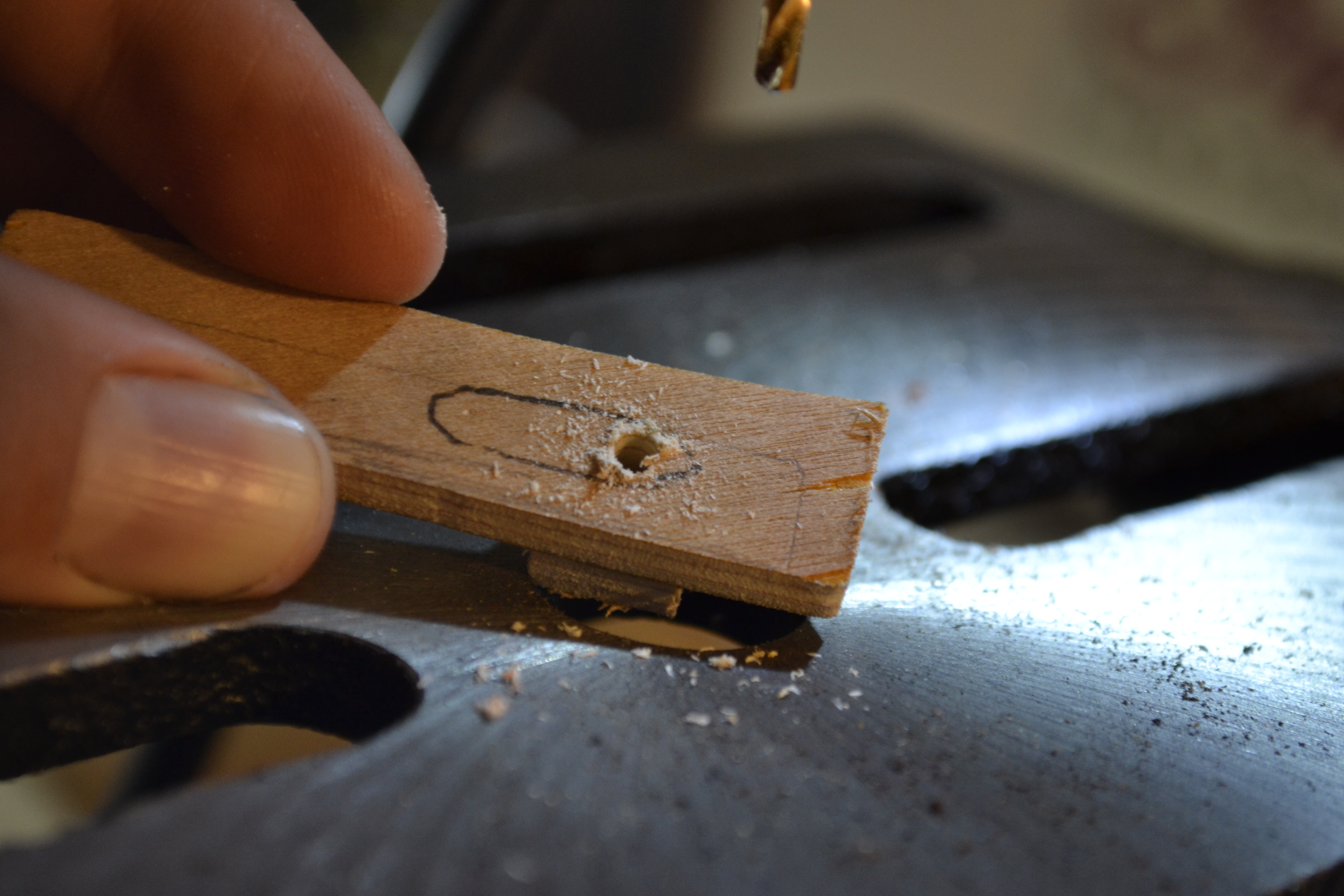
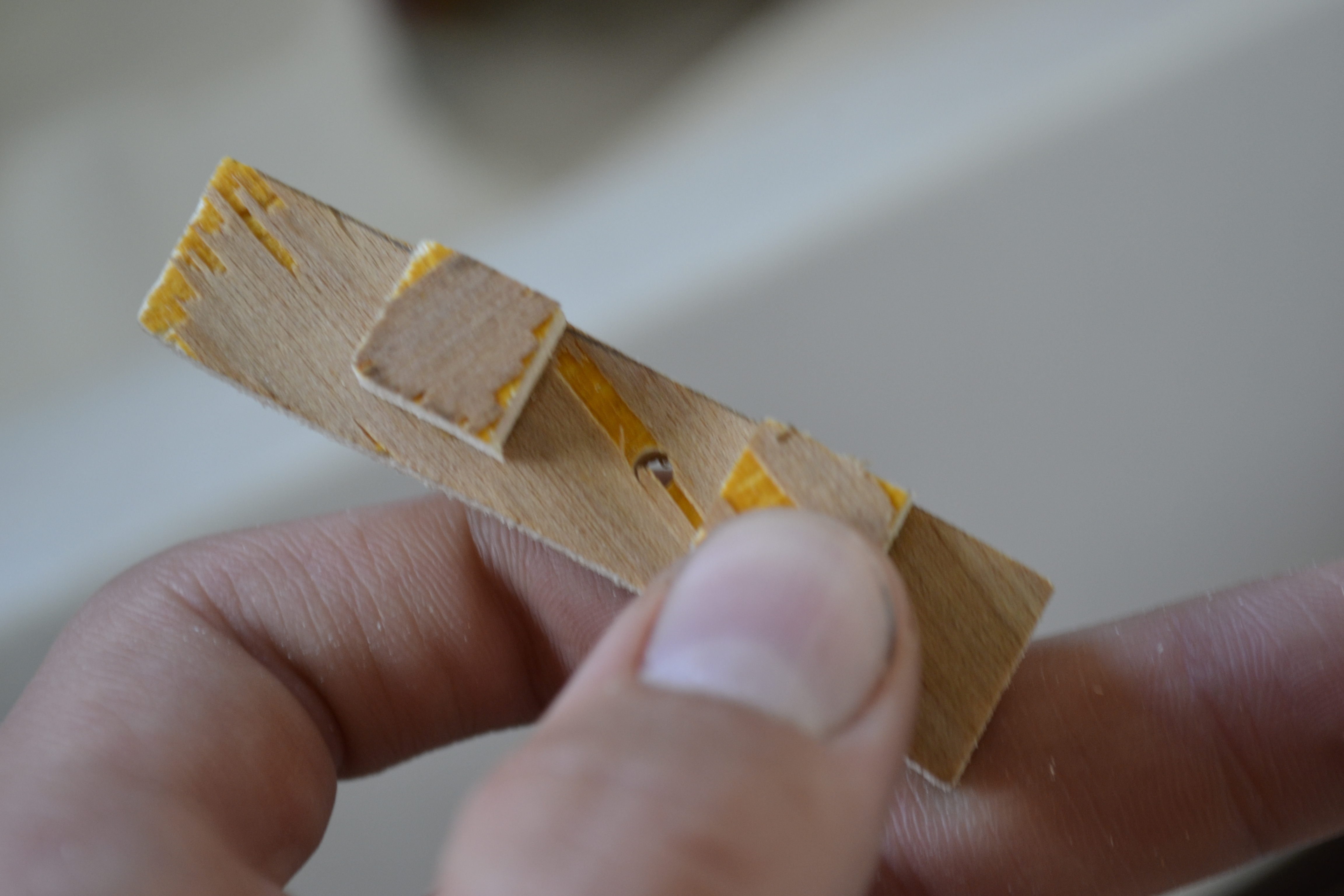
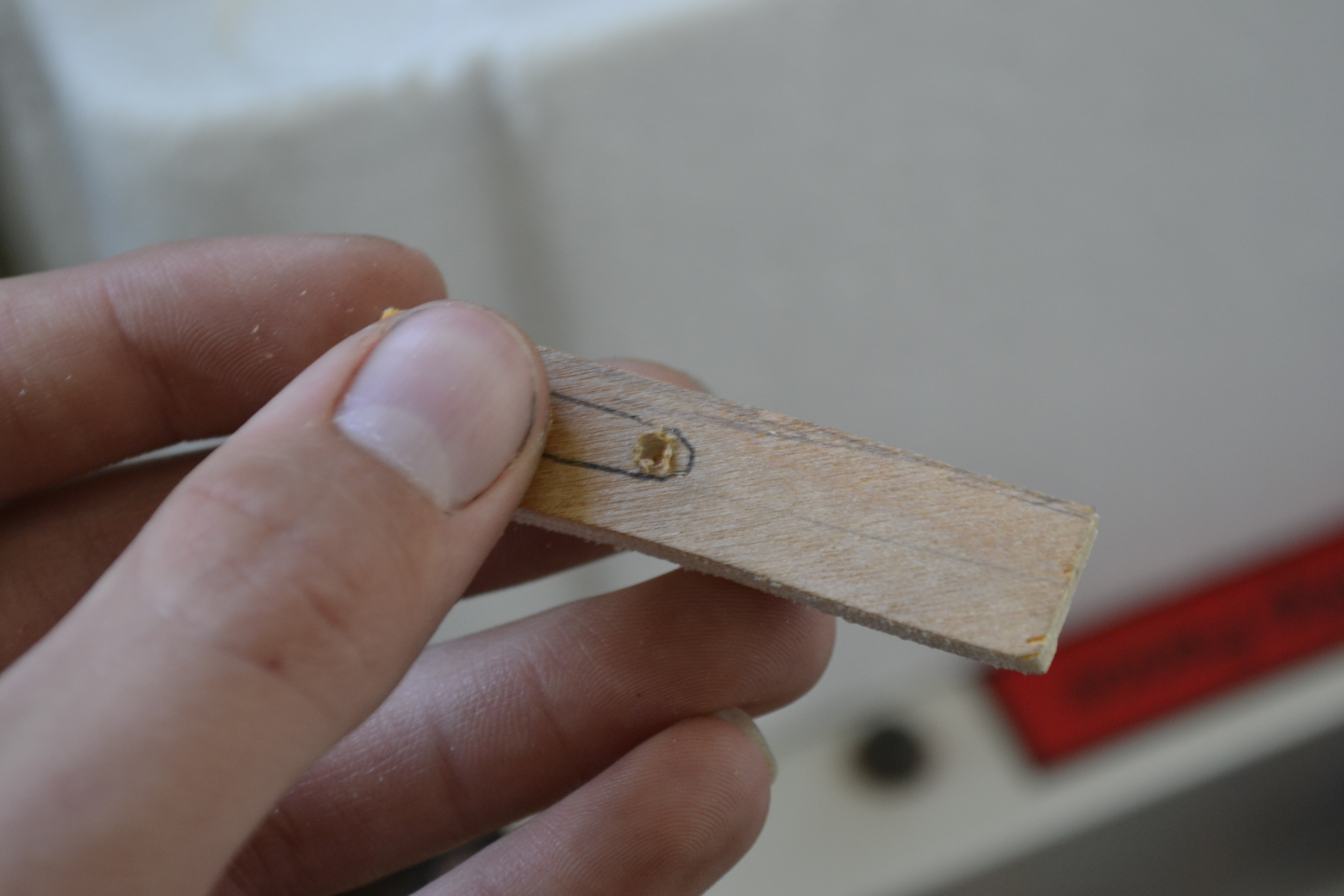



Now it's time to drill the hole that you just marked. What I'm using to drill here is a drill-press, but if you don't have one a regular drill would work just fine. I drilled a 1/8 in. hole, just small enough that my two screws and enter the hole, but still have grip when tightened. Once drilled, place on the lid and insert the screw through the lid, and into piece B. (see images above) The screw should fit as seen in the images above.
Repeat







Now you will repeat the previous step. You're going to trace the slot unto piece C, mark where you'll drill at about 1" from the edge, and then take it to the drill press to drill the 1/8" hole. Once done, insert the screw like before and make sure everything fits together. Then, test it out by sliding piece A into piece B. (see images above)
Once done, you're ready to move on!
Make the Sliders


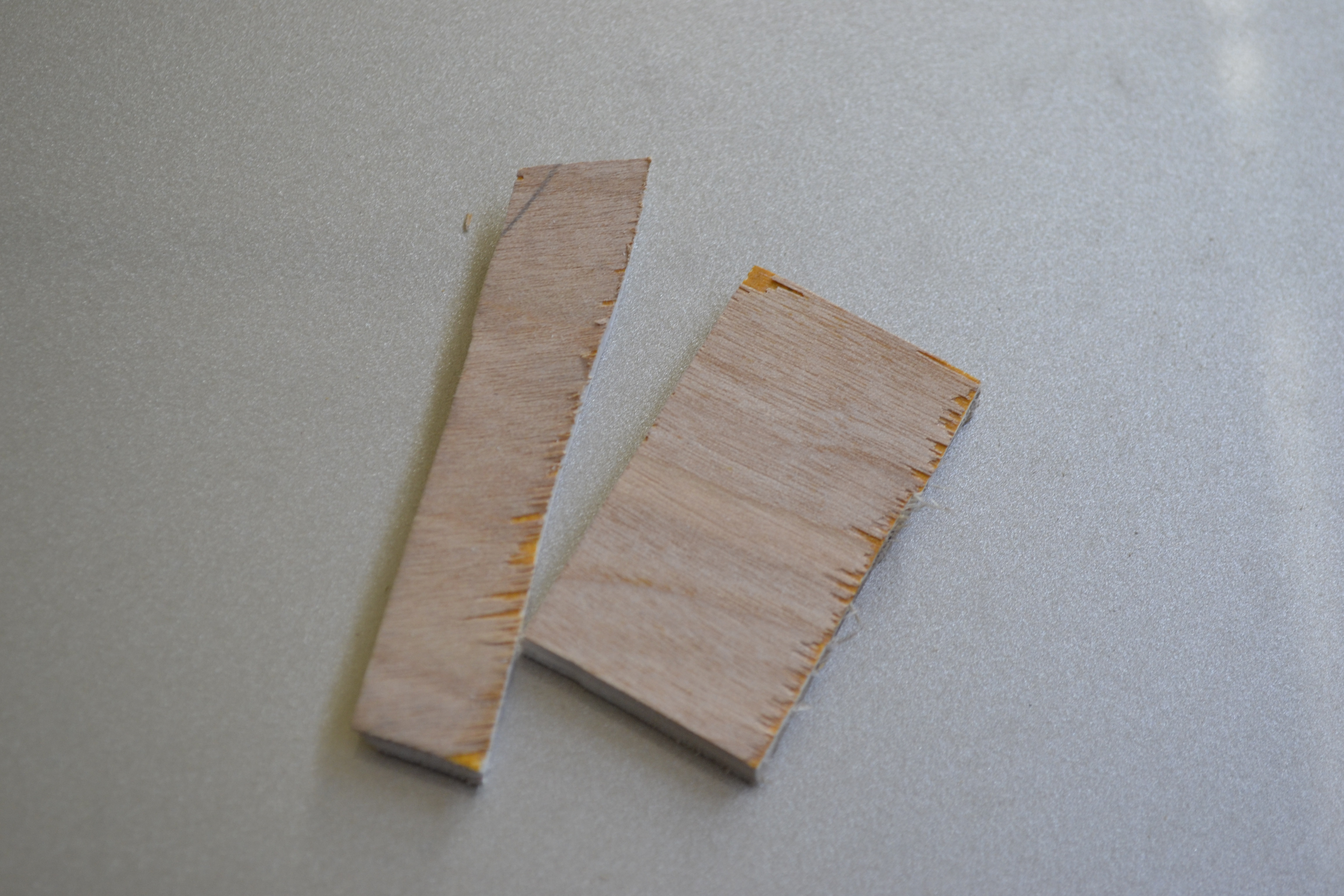






Now it's time to make the sliders for the moving pieces. Here I cut two pieces, one is 1/8" x 1 1/4" x 2", this will be called piece '1'. The other is 1/8" x 1/2" x 3", this will be called piece '2'. Once you've cut them out, you're going glue piece '2' to the bottom of the lid, just up against piece A. (see images above) Then, glue piece '1' to the top of piece '2', leaving the right side of the pieces flush while piece '1' overlaps piece A. (see images above) Once the glue has set, remove piece A from the mechanism; ensuring that the moving components are still able to move.
Once the glue has dried (3-5 hrs), you're ready to move on!
Make Stoppers







Now it's time to make stoppers for the moving parts, it helps keep the pieces tight and compact. What I'm using for these is just a bunch of scrap wood, all under 1/8" x 1/4" x 2". And what I'm doing is glueing one on the left side of piece C, the bottom of piece B, the top of piece B, and a 3/4" away from the end of piece A. (see images above) Once these are all glued, let the glue set for 10 min., and then move the parts around a bit ensuring that the pieces are still able to move.
Once the glue has dried (3-5 hrs), you can continue to the next step.
Cut the Inside of the Box
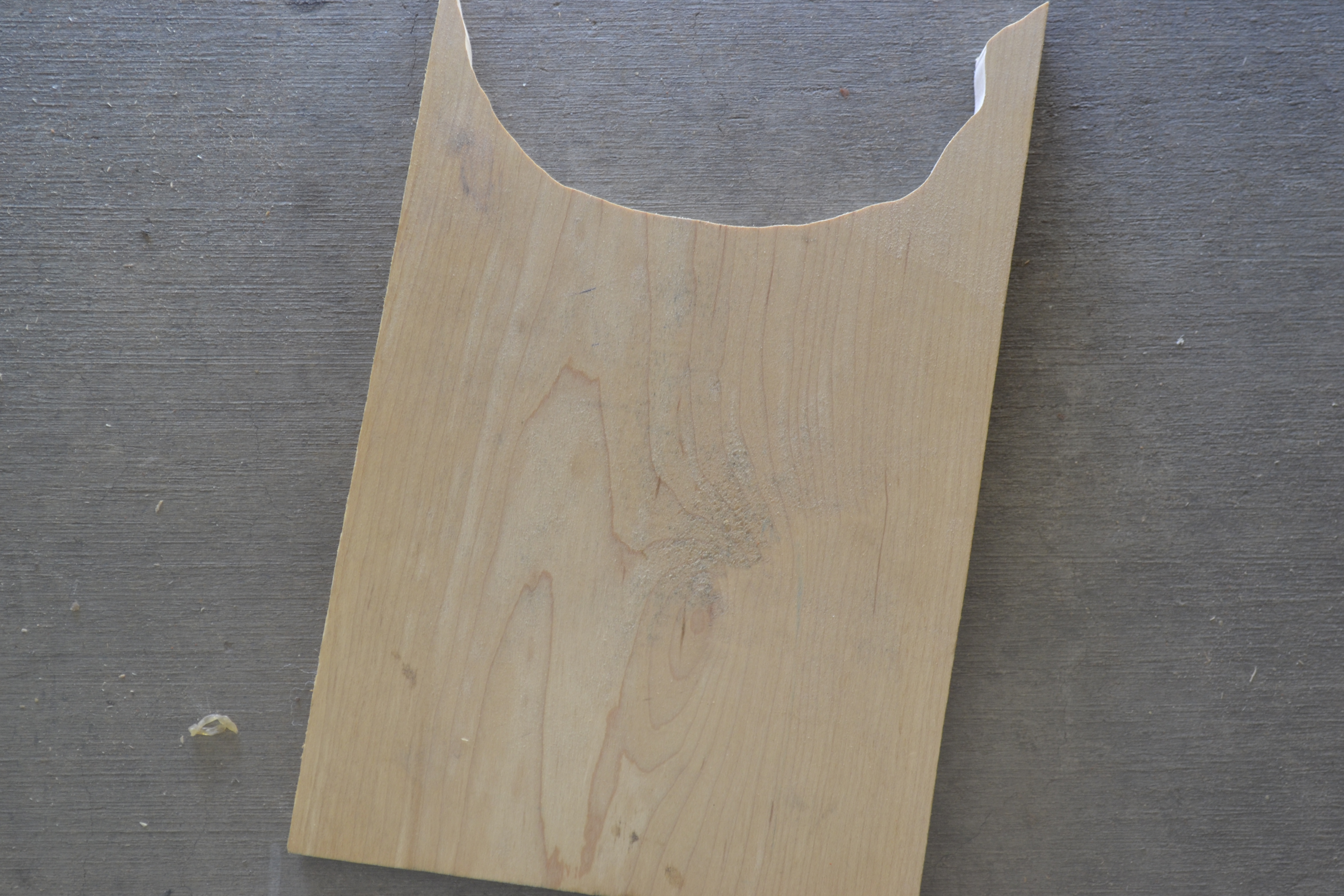





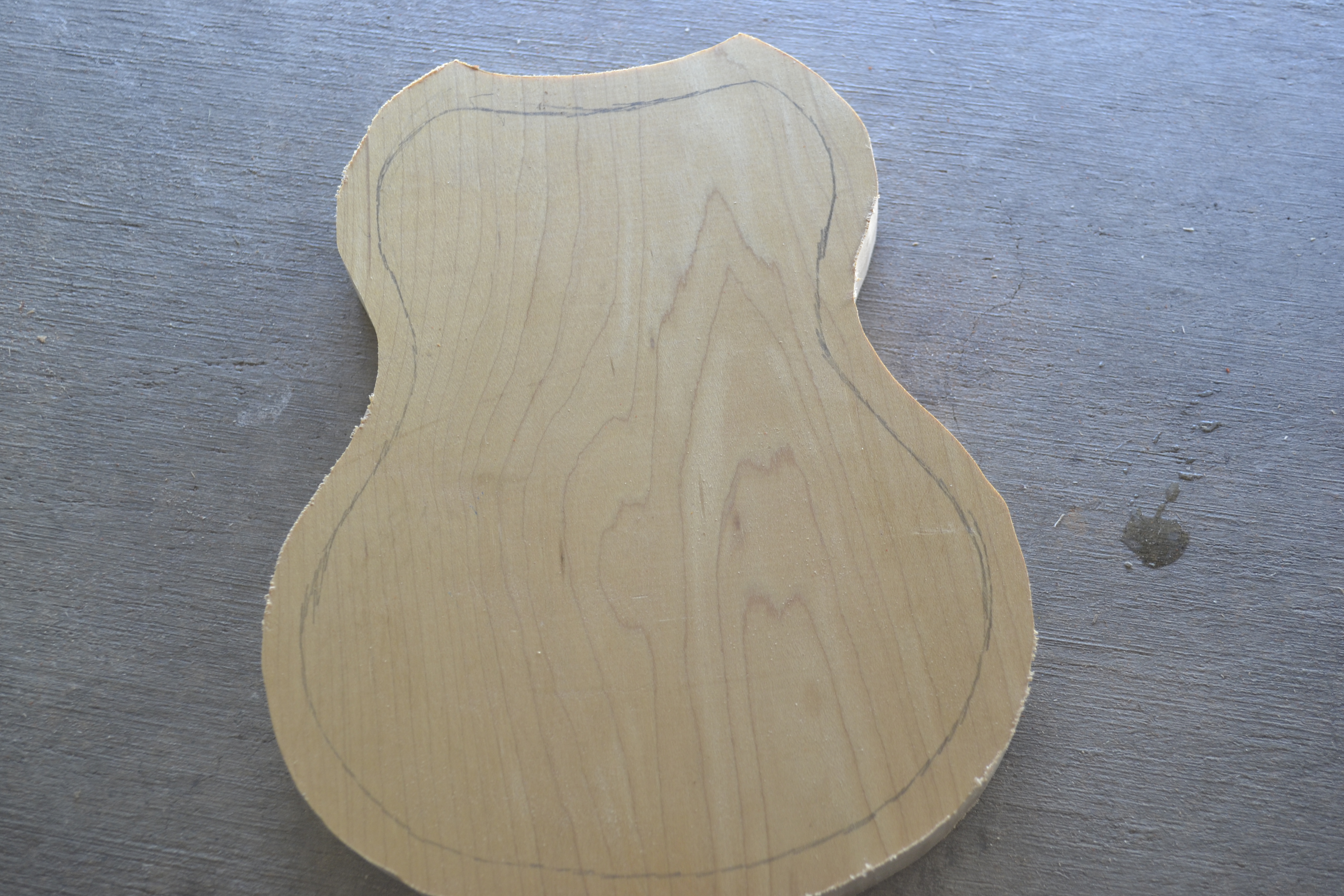



Now that your lid is finished, you can make the inside of the box. To start, trace the lid you cut out before, unto a 1" thick piece of Maple, or wood of choice with a pencil. Then, mark another line 1/8" towards the inside of the box, making the box just a bit smaller than the lid itself. Then, take it to the scroll saw to cut out the inner line. Once done, mark another line just 1/4" away from the outer edge using a pencil. Then, drill a 1/4" hole near one of the corners, and use this hole to insert your scroll saw blade. Once done, cut out the inside of the box as seen in the images above. This piece will be called piece A.
Once cut, you're ready to move on!
Bottom of the Box

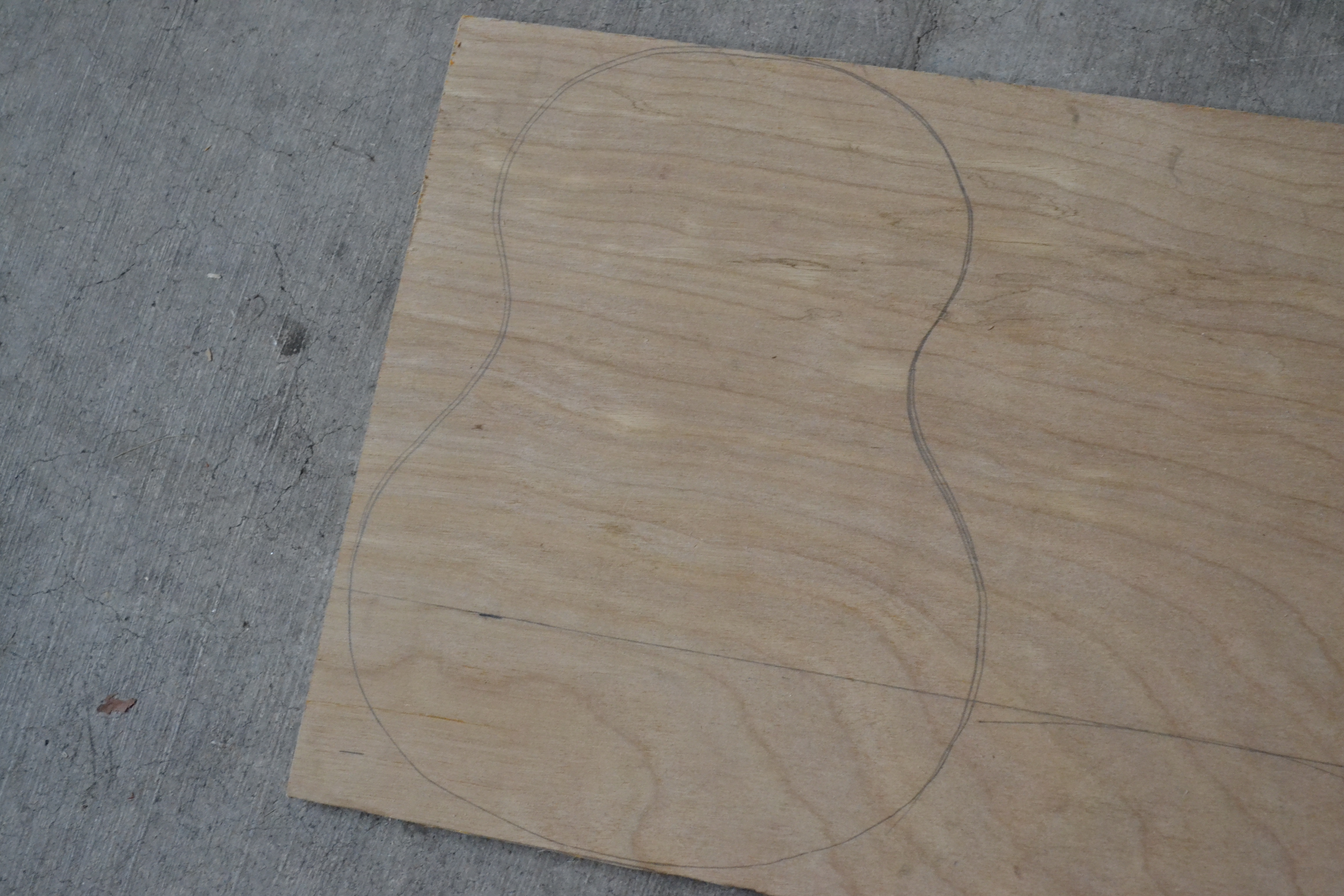





Now that the inside of your box is cut out, it's time to make the bottom of your box. What I used was just a 1/8" Plywood board, but if you would like to use something more fancy; go right ahead! To start you're going to trace the lid unto the Plywood using a pencil. Then, take it to the scroll saw and cut just outside the line that you traced, making sure to be as precise as possible when cutting. This piece will be called piece B. Once it's cut out, apply glue to the bottom side of piece A, and press piece B unto piece A. (see images above)
Then, once the glue has set (about 5 mins.), clamp it down and let sit for 3-5 hrs. before moving on.
Mark the Slot's Screws








While the box is drying, go ahead and take the Bridge and Pickguard, and figure out where they're going to be placed according to the template. Once done, place the Bridge on top of the screw you put earlier; and press down and twist ensuring to mark the backside of the bridge where you will drill. (see images above) Repeat this step with the Pickguard. Then, find a drill bit that's the same diameter as the screw's head. Then, drill a 3/16" deep hole into the Bridge, without drilling completely through the piece. Repeat with the Pick Guard.
Once done, you can move on to the next step!
Attach Hinges





Now it's time to attach hinges to the lid, and box. I used a regular 1" brass hinge. To start, use a pencil and mark where you desire to place the hinge. (make sure to mark it on the wide parts of the body, see images above) Then, use a 1/16" drill bit and drill where you marked the holes. I used a Drill Press to do this, but any drill would work. Once done, attach the hinges to the box using a screw driver, no power tools. Repeat with the lid. You want to attach 2 hinges to the box, one to the bottom left side; and one to the top right side.
NOTE: Try not screw them in as straight as possible, don't screw them in at an angle. You want to avoid any tear-out that might occur while screwing it in. (see images above)
Keep in mind: You want to put the hinges where the box curves towards the outside the most, you don't want them on the inside curve; this will result in failure to close the box. (see images above)
Once done, you're ready to move on!
Cut the Divider






Noe it's time to cut the divider for the inside of the box. Here I took the cut-out from piece A, and marked a line going from wide to thin, from right to left using a pencil. (see images above) Then, I took it to the scroll saw where I then cut the piece out, and then cut the piece directly in half in a zig-zag, or wavy pattern. (see images above)
NOTE: Cutting the piece in half is necessary, because when the lid is closed it won't be able to close all the way due to mechanism.
Once cut out, you can move on to the next step.
Fit, and Cut




Now that your divider is cut out, take it do the scroll saw once more and cut it directly in half again, but this time cut a straight line, not a zig-zag or wavy pattern. Cut halfway, and the exit the cut. (see images above) Once done, make sure that the larger piece still fits snug into the inside of the box.
NOTE: This step can be dangerous, and testy; therefor I am not responsible for anything that might happen to you, your equipment, or anyone around you while performing these maneuvers.
Once cut, you're ready to move on!
The Locking Mechanism

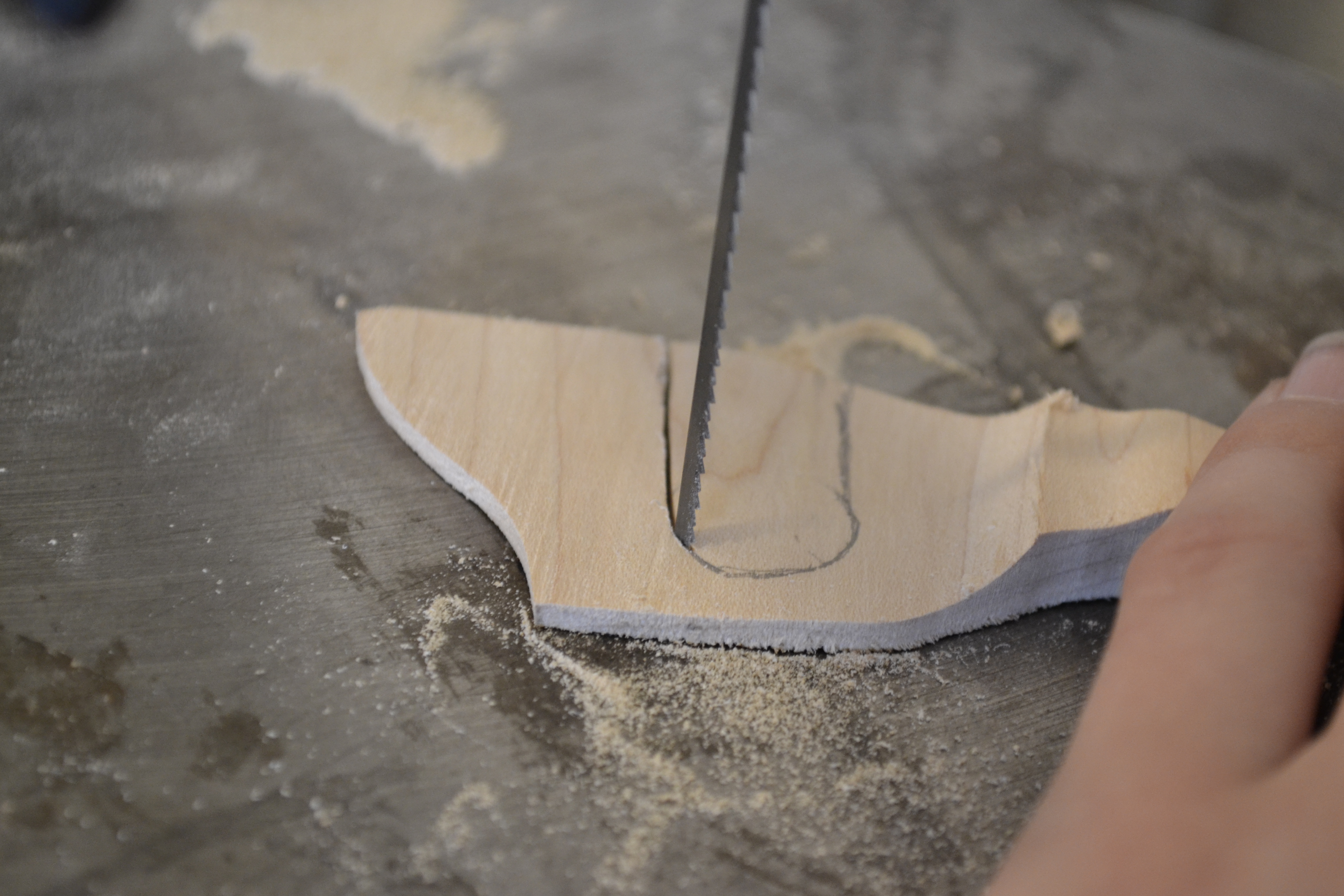


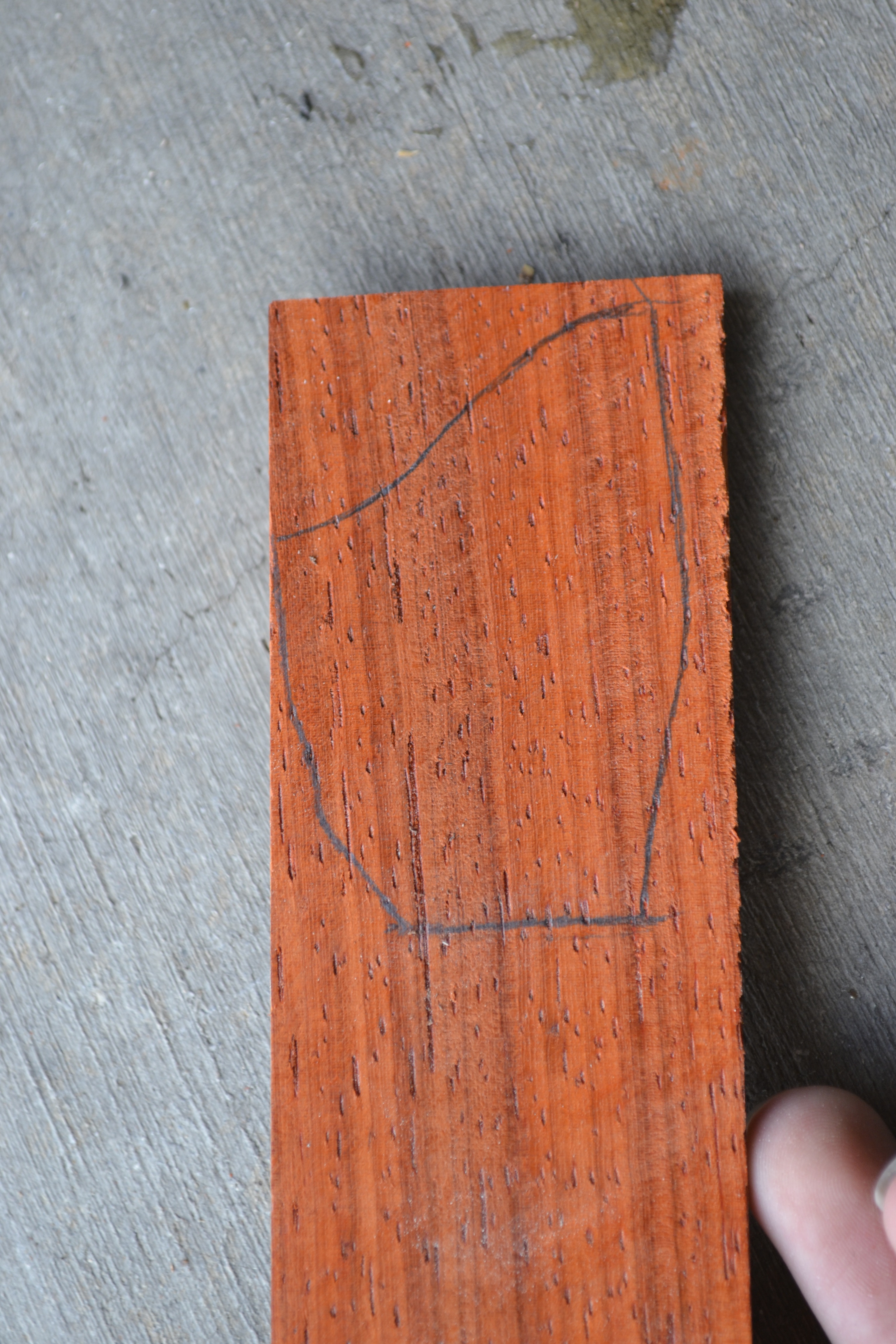
Now it's time to cut out the locking mechanism into the Divider. Here I traced a 1/2" slot into my Divider using a pencil, leaving one side open and one side still attached. (see images above) Then, I took it to my scroll saw and cut out according to the line we traced. Then, I found a 1/8" piece of Paduak and traced the end of the divider unto the Paduak using a pencil. (see images above) You want to trace it so that it stops where the halfway point is where we exited the cut, making sure the Paduak will be able to fit on top of the divider.
Once done, you can move on to the next step!
Cut, and Glue








Now that your Paduak is traced, take it to the scroll saw and cut out the shape. Trying to cut just outside the line. Then, trace the slot of the Divider unto the Paduak. After that, mark a line using a pencil so that the piece goes from thin, to wide from the inside out. (see images above) Then, take it to the scroll saw and cut it out. Once cut, apply glue to the Divider and glue the Paduak unto it. (see images above) When the glue sets (about 10 mins), take the piece and glue it into the bottom of the box. Make sure to use plenty of glue for this step.
Wait for glue to dry (3-5 hrs), and then continue to the next step.
Insert the Locking Component


Now that your divider is cut, it's time to make the locking component of the lid. Here I used a Screw, it has a flat head but a narrow Shank, allowing it to fit into the divider but still lock into the narrow slot. I started by drilling a 1/4" hole into piece C of the mechanism. (see images above) Drill it so that it goes at least 3/4 of the way through the piece, without going all the way through. I also drilled a 1/4" hole because it was the same diameter as the shank, so it would screw in easily. Once drilled, insert the screw into the hole as seen in the images above. Then test it out by locking it into the divider when the lid is closed. If it has trouble doing so, just adjust the screw on how much it's screwed into the wood, and that should solve the problem.
Once done, you're ready to move on!
Sanding, Sanding, and More Sanding!



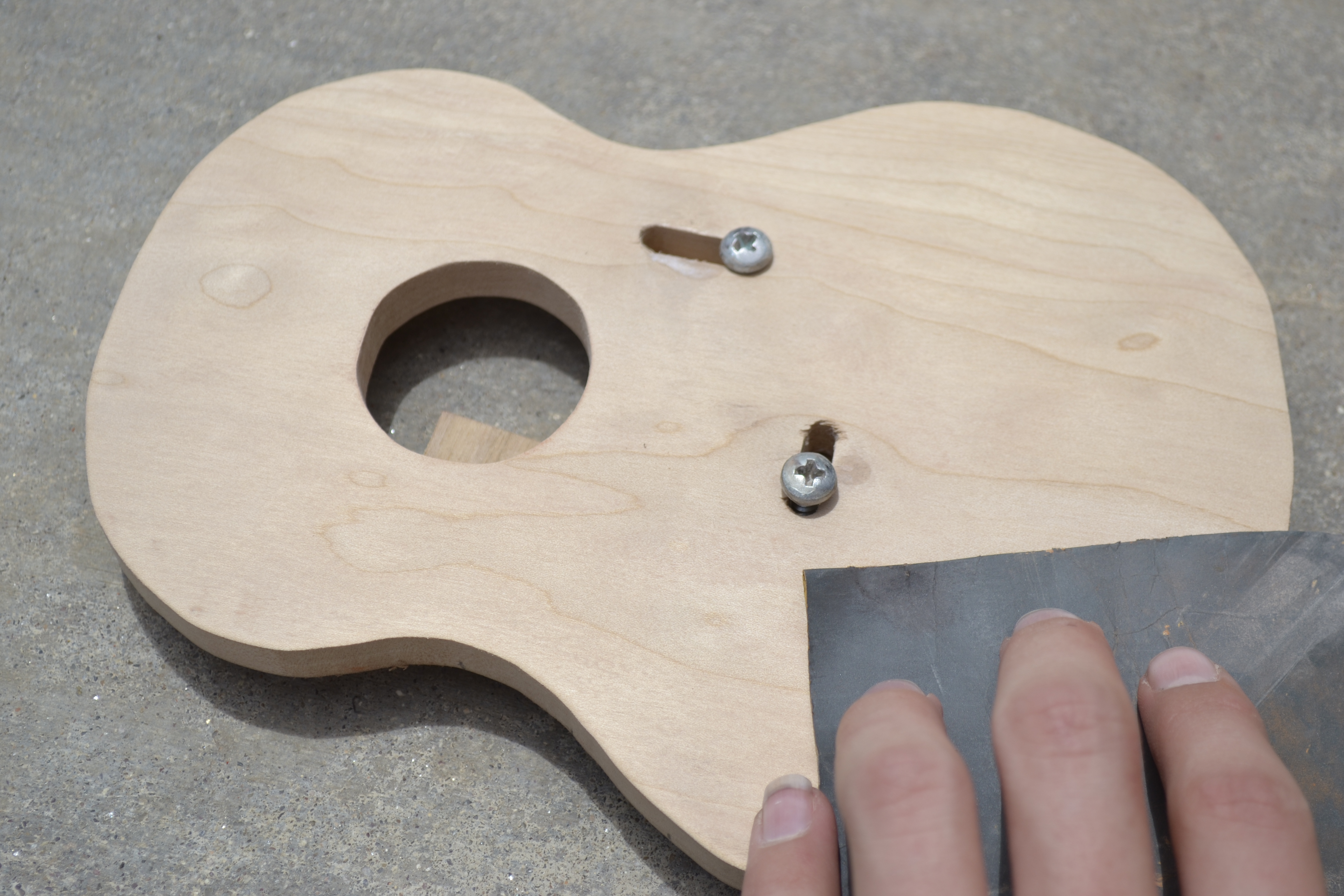



Now it's time for sanding. I started with the lid, in which I detached it from the box itself from the hinges, allowing it to be easier to sand. I started with a 120 grit pad on a Orbit Sander, and moved up to 400 grit. Then, I hand-sanded the rest of the way working my way from 400 grit, to 2000 grit. I also did the same with the Bridge, the PickGuard, and the neck.
NOTE: Make sure to take your time within each grit, ensuring to sand out every minor scratch in the wood.
Once done, you can move on to the next step!
Make the Neck
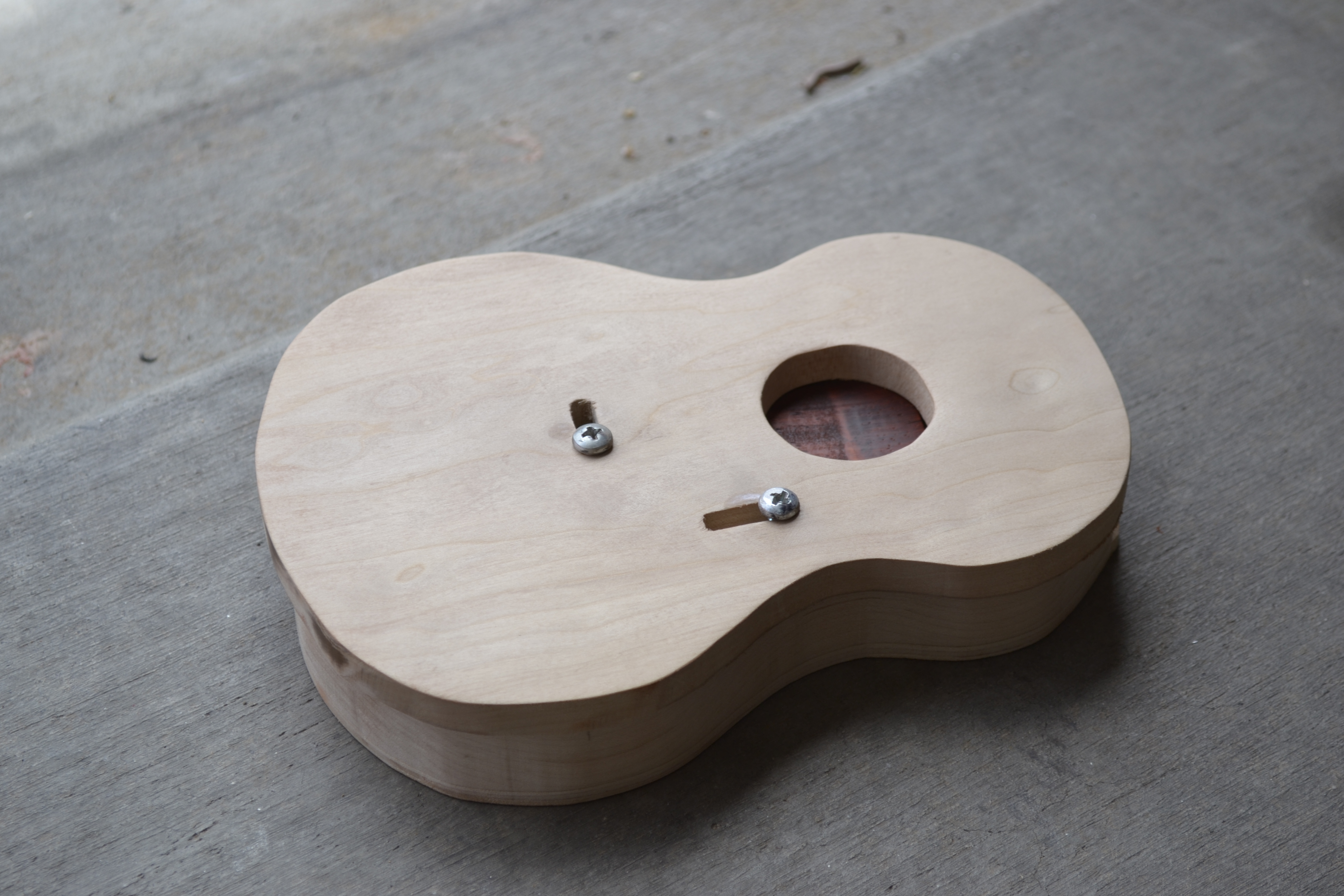








Now it's time to make the neck of the guitar! You have already cut the Paduak of the neck, but now you're going to cut out one more component of it. Here I decided to use some Birdseye Birch from which is 1/4" thick. I started by taking the Paduak neck that we cut earlier, and tracing it unto the Birch using a pencil. Once traced, take it to the scroll saw and cut just outside the line that you traced. Again, trying to maintain a steady cut and being as precise as possible. Once done, Take it over to the lid and mark it from where the Sound Hole starts, to the end of the guitar. (see images above) Then, take it to the scroll saw and cut along that line. Once done, glue the Birch unto the Paduak, and clamp it down tightly. (see images above)
Let dry for 3-5 hrs. before moving on to the next step.
Shape the Neck



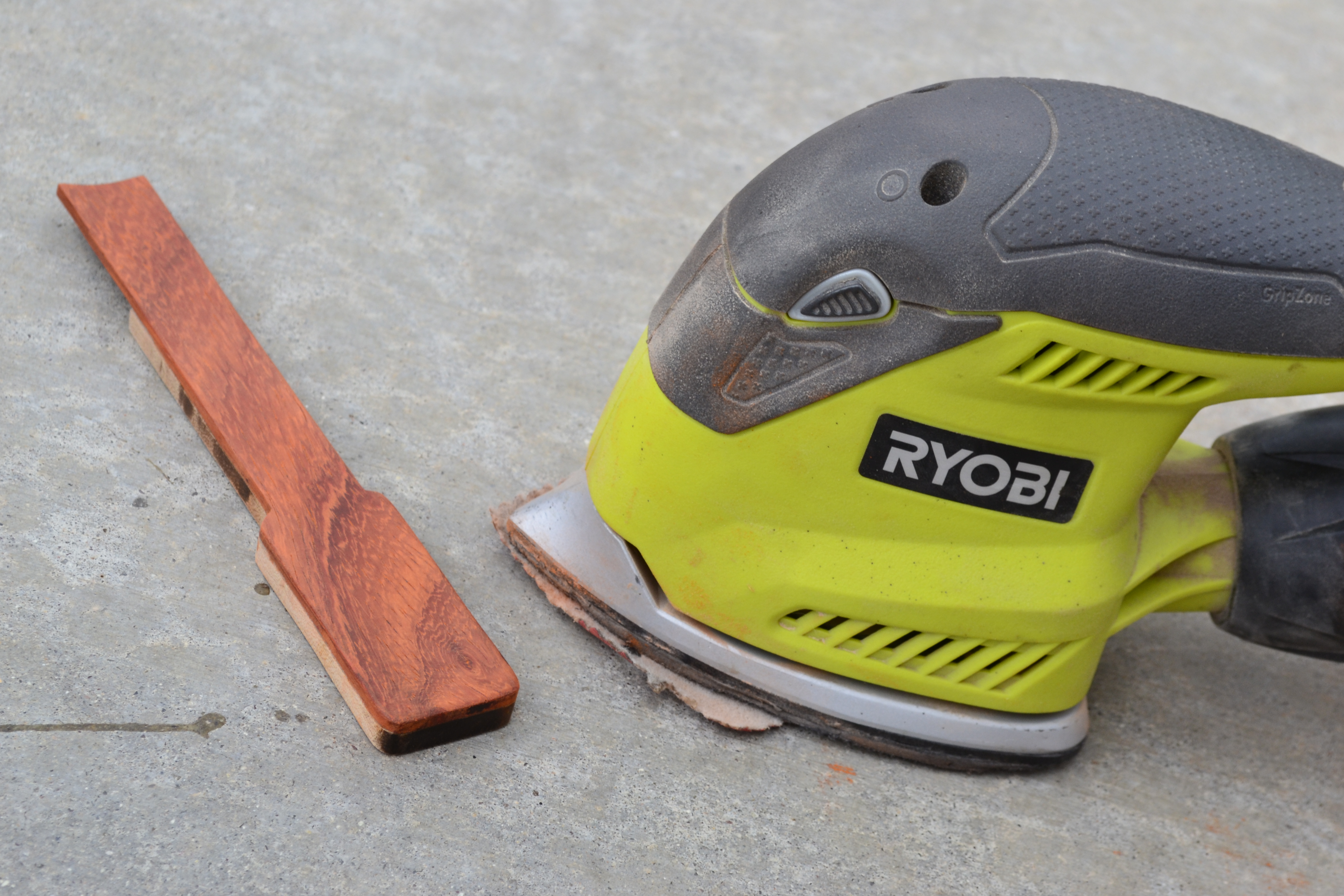

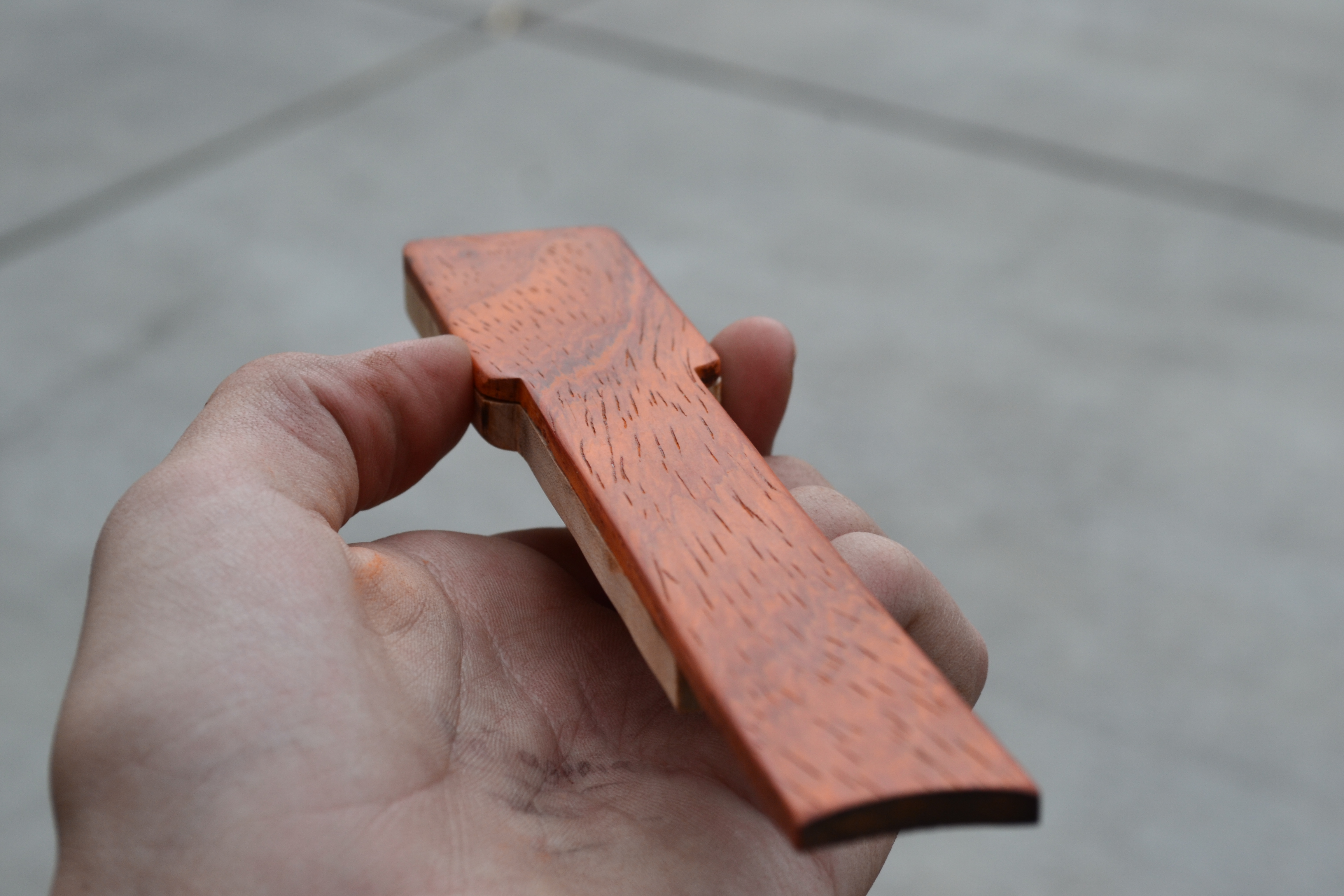
Now that the neck of the guitar is glued and dried, it's time to shape it the rest of the way. Here I took it to my Disc sander where I shaped the Headstock, and neck according to the template. Then, I took it to my Random Orbit Sander where I sanded down the neck from 120 grit, on up to 400 grit. Sand both sides, the Paduak and the Birch. Then, I finished it off by hand sanding from 400 grit, to 1000 grit.
NOTE: Make sure to take your time within each grit, ensuring to sand out every minor scratch in the wood.
Once done, you're ready to move on!
Oil Your Pieces





Now that all your components are made, it's time to oil all the pieces before assembling the box together. Here I oiled the pieces with Rejuvenating Oil, so it's just wipe-on and wipe-off. You can use any oil you like, but I decided to use Rejuvenating oil because it brings out the color of the wood pretty well. I started with the smaller pieces first, and then started oiling the lid and box itself. Try not to let the oil sit for too long on the wood, you don't want it to get sticky before you go back to wipe it off.
Apply 3 coats, wait an hour, and apply 3 more coats.
Attach the Moving Components
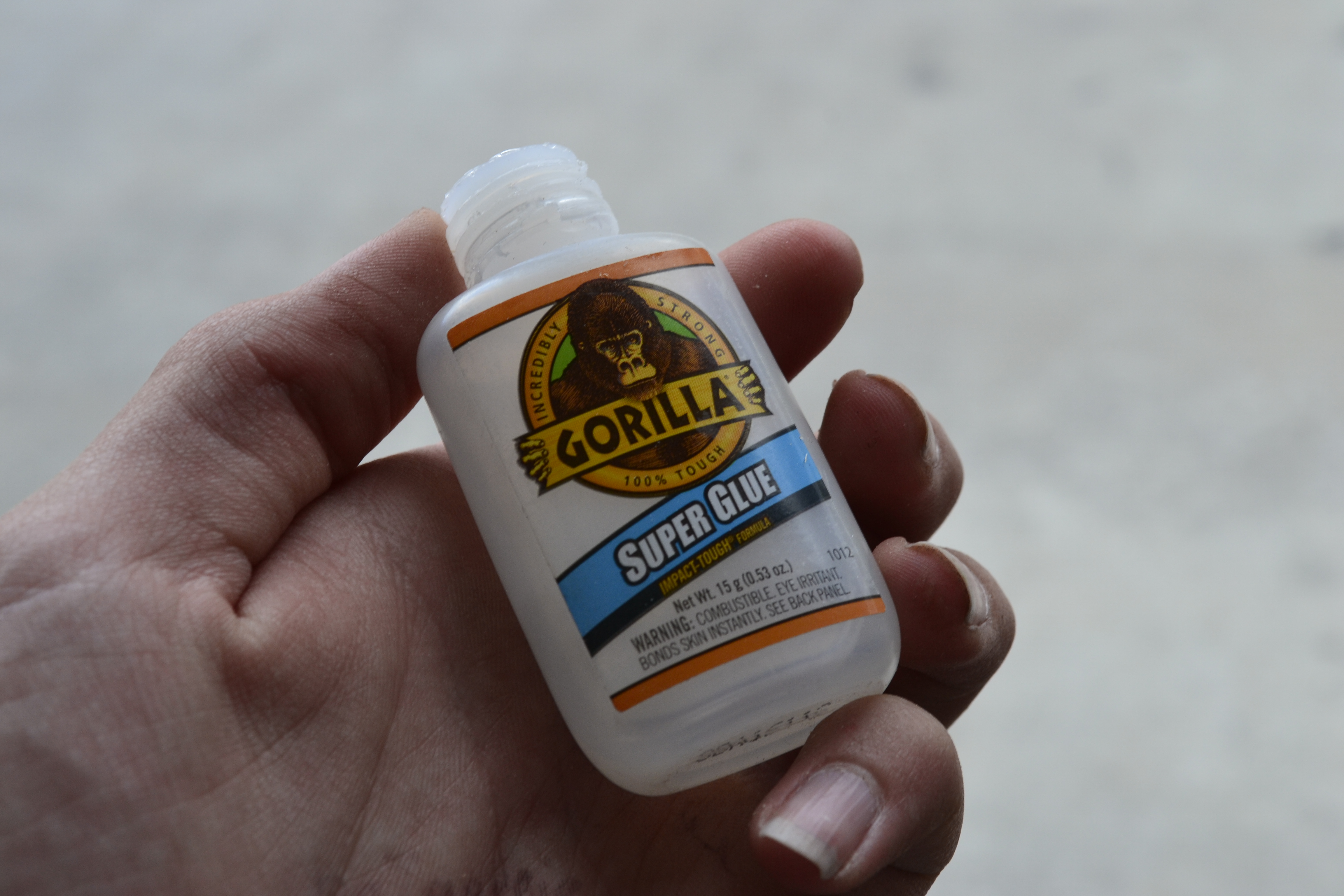




Now it's time to attach the Bridge and PickGuard to the screws. I used some Gorilla Super Glue, but CA glue and/ or E6000 would work just as well. I started by applying drops into the hole, and then pressing the pieces tightly unto the correct screws. (see images above) After 5 minutes, come back to the pieces and move them around a bit, ensuring that they can still move.
Repeat for about 30 mins., and then you can continue to the next step.
Glue and Oil




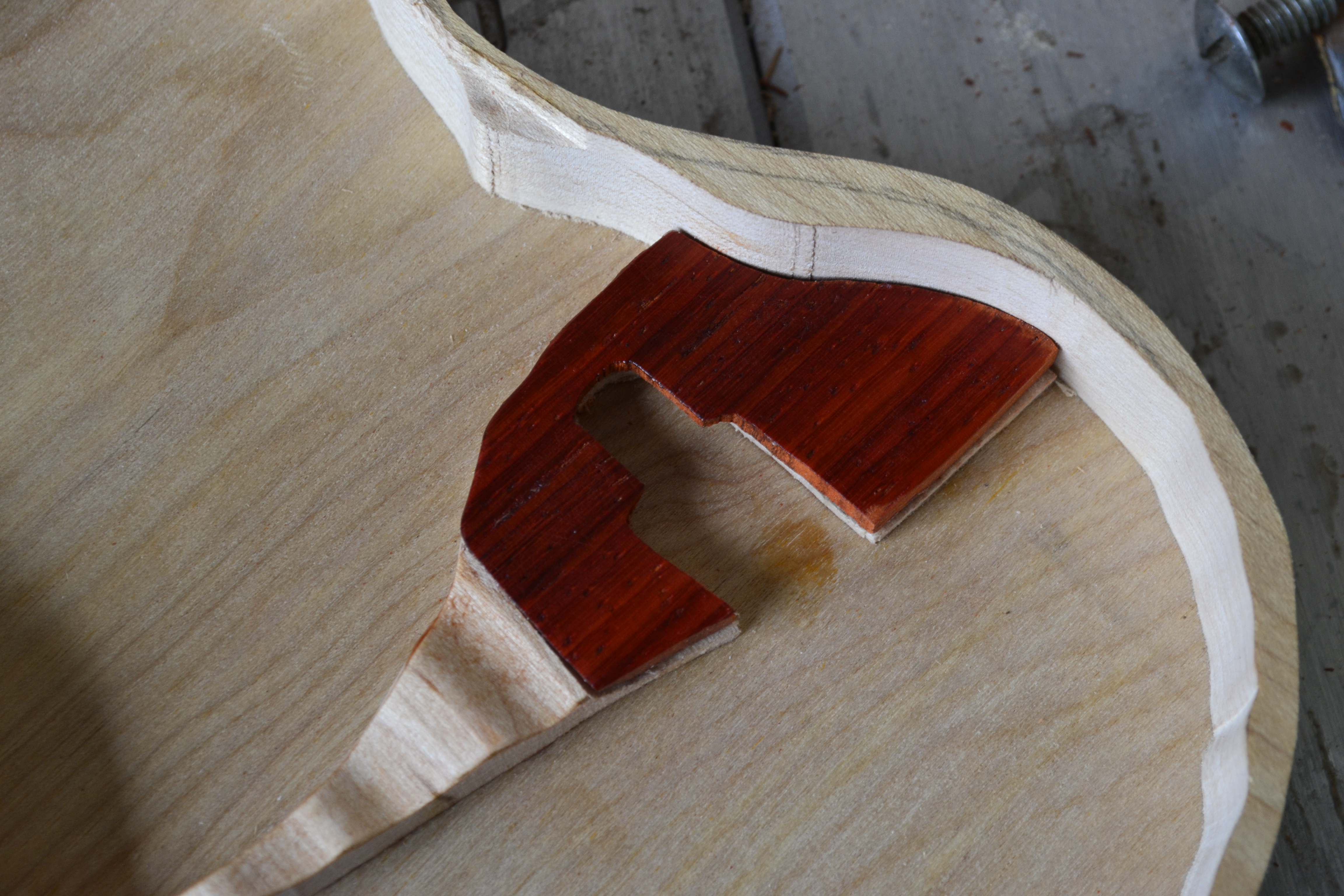
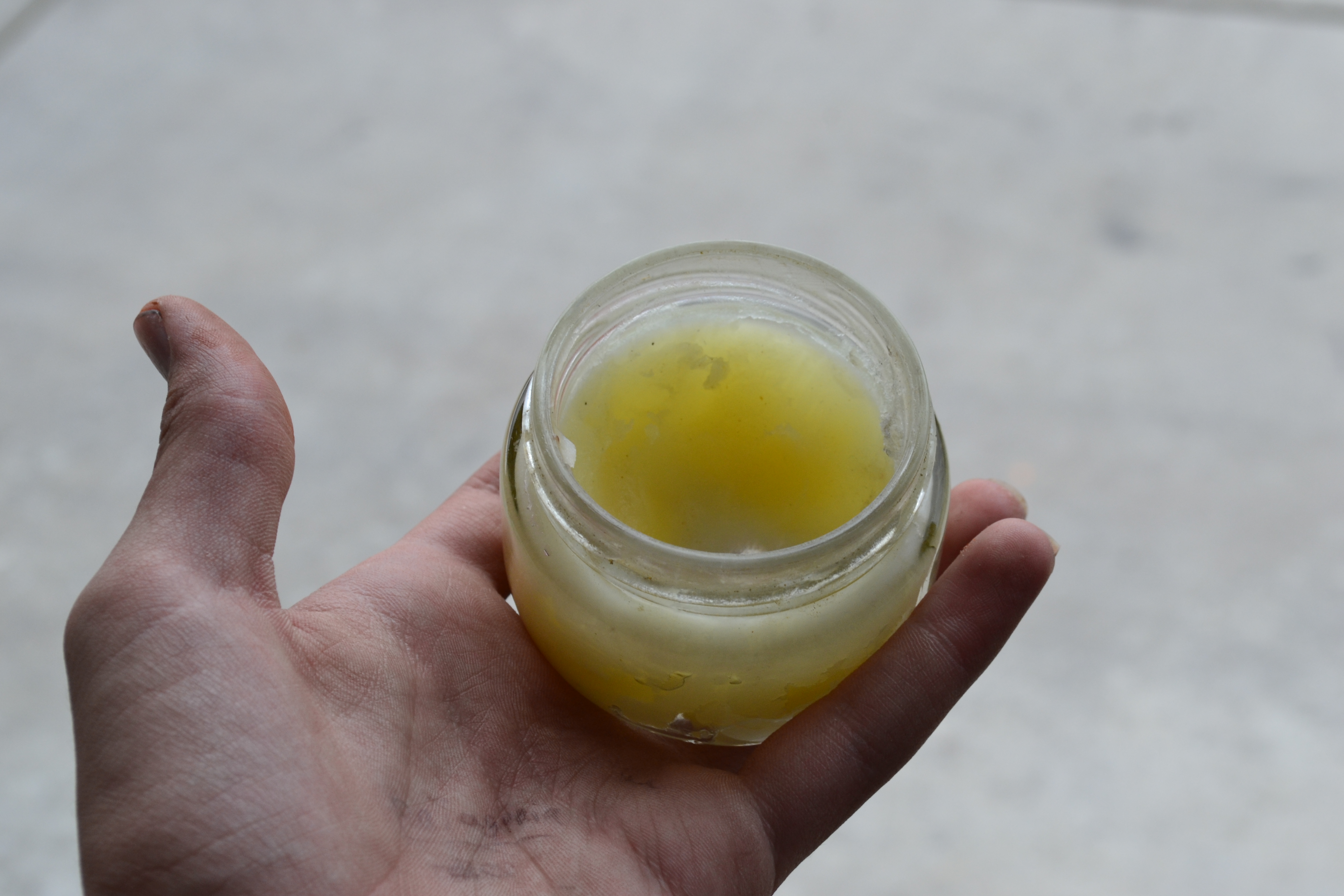

Now it's time to glue the neck to the box lid! Start by applying wood glue to the lip of the neck, and then pressing it unto the edge of the box. (see images above) Let the glue dry for about an hour, and then oil the Neck and inside of the box with Rejuvenating oil and/ or oil of your choice. I decided to oil the inside of the box with Beeswax, just so I can reach the tight spots easier.
Once done, you're done!
Finished!





Now your box is finished! This was a very fun, and inspiring project that I really enjoyed doing. It's by far one of my favorite projects, and I hope you all enjoyed it as much as I did. This was an extremely fun project, and I plan on making more in the future. This project will easily impress even the best woodworkers, making it the best project ever!
To open puzzle box:
1. Slide the Sound Hole up towards neck.
2. Slide the Bridge to the left.
3. Slide the PickGuard up.
4. Open lid.
5. Store all your cool belongings in it!
I hope you all enjoyed this project, but until next time; stay tuned, and 'Create Something'.
Want to see more? Visit my Youtube Channel or Website for more projects like this!